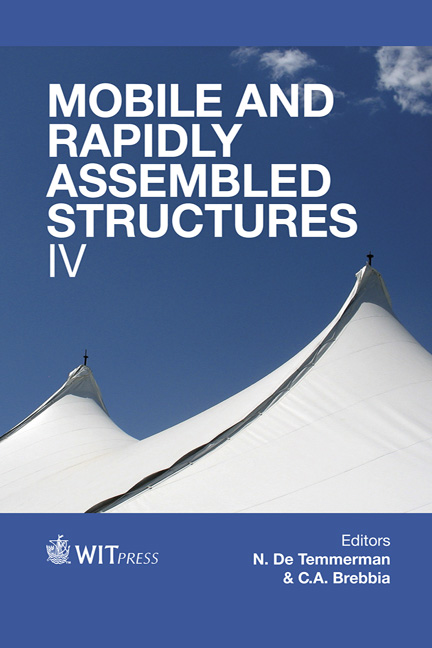The Design And Physical Modelling Ofdeployable Structures Based Oncurved-line Folding
Price
Free (open access)
Transaction
Volume
136
Pages
11
Page Range
145 - 155
Published
2014
Size
1,118 kb
Paper DOI
10.2495/MAR140121
Copyright
WIT Press
Author(s)
A. Vergauwen, N. De Temmerman & S. Brancart
Abstract
Curved-line folding is the act of folding paper along a curved crease pattern in order to create a 3D shape, using the combination of folding (plastic deformation) and bending (elastic deformation). Up until now, the use of curvedline folding in architecture has been limited to static applications only, such as metal sculptures or façade panels. However, the elastic deformations that occur when a flat sheet is forced into a curved shape can produce an interesting transformation process. The elastic deformation of one area of the sheet results in the folding and bending of adjacent surface areas as the internal forces and moments are transferred through the curved creases. This paper explains how this behaviour can be used for the design of deployable structures finding their application in the context of adaptive shading. Through the analysis of various crease patterns and the fabrication of small scale models, some important design parameters are defined. This paper demonstrates how the choice of the composition of the crease pattern, the curvature of the creases and the Length–Thickness Ratio affect the resulting kinetic system. The outcome of the analysis is useful for the design of deployable structures based on curved-line folding. Keywords: curved-line folding, curved-crease folding, deployable structures, pliable structures, scale models, kinematic shading.
Keywords
curved-line folding, curved-crease folding, deployable structures,pliable structures, scale models, kinematic shading.





